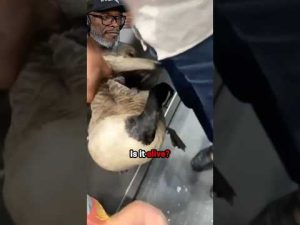**The Unraveling of a Pandemic Cover-Up: A Twisted Tale of Censorship and Control**
In a shocking twist of events, the truth about the origins of COVID-19 is under scrutiny as more revelations emerge regarding the efforts to stifle dissenting voices. What was once considered a routine exploration of scientific fact has morphed into a deeper investigation into what many are now calling the “censorship industrial complex.” This enigmatic web connects government agencies, tech giants, and third-party organizations, all seemingly united with one goal: to impose a single narrative on the public.
At first, the idea of suppression may seem implausible, but digging deeper into this intricate narrative reveals that there are powerful forces willing to go to great lengths to maintain their grip on “the science.” Some experts believe the pandemic likely originated from a natural occurrence – a theory that suggests the virus jumped from animals to humans. However, others have pointed fingers at the spotlighted Wuhan Institute of Virology, sparking debates that are as viral as the disease itself. Yet, the spotlight isn’t only on the origins of the virus but also on who’s maintaining the control over what the public hears.
When Elon Musk took the reins of Twitter, the world was suddenly offered a glimpse into the inner workings of one of the largest social media platforms. He opened up Twitter’s files to independent journalists, including Matt Taibbi, igniting a wildfire of interest akin to a campfire marshmallow roast. What they uncovered during their investigations was nothing short of alarming. They found an impressive number of communications between security agencies and social media companies, raising crucial questions about the nature of free speech in the digital age.
As investigations unfolded, the evidence revealed a chilling reality: government agencies such as the FBI and the Department of Homeland Security were actively collaborating with social media platforms to suppress certain narratives. From sending out questionable emails to flagging content, the implications of this unholy alliance could make even the most seasoned conspiracy theorists raise an eyebrow. The revelation of this coordinated effort to suppress dissenting voices not only raises First Amendment concerns but also highlights a substantial breach of trust between citizens and their government.
The narrative might sound like something plucked from the pages of a dystopian novel, but the reality is that these strategies have been utilized for years. The collaboration between government entities and social media companies can be traced back to the mid-2000s, where tactics involving national security letters became commonplace. This behavior paints a troubling picture of an increasingly authoritarian attempt to influence public opinion and quash any form of opposition.
As the nation grapples with these revelations, the questions loom large: How deep does this rabbit hole go? Will the truth finally come to light, or will we continue to be bombarded with curated information that fits a particular narrative? The intricacies of the censorship industrial complex are becoming harder to ignore, and those invested in free speech and public discourse have every right to demand transparency and accountability. In a world where information is power, it’s essential that citizens remain vigilant in the quest for truth, not just about the virus but about the underlying forces that dictate what they are permitted to know.







